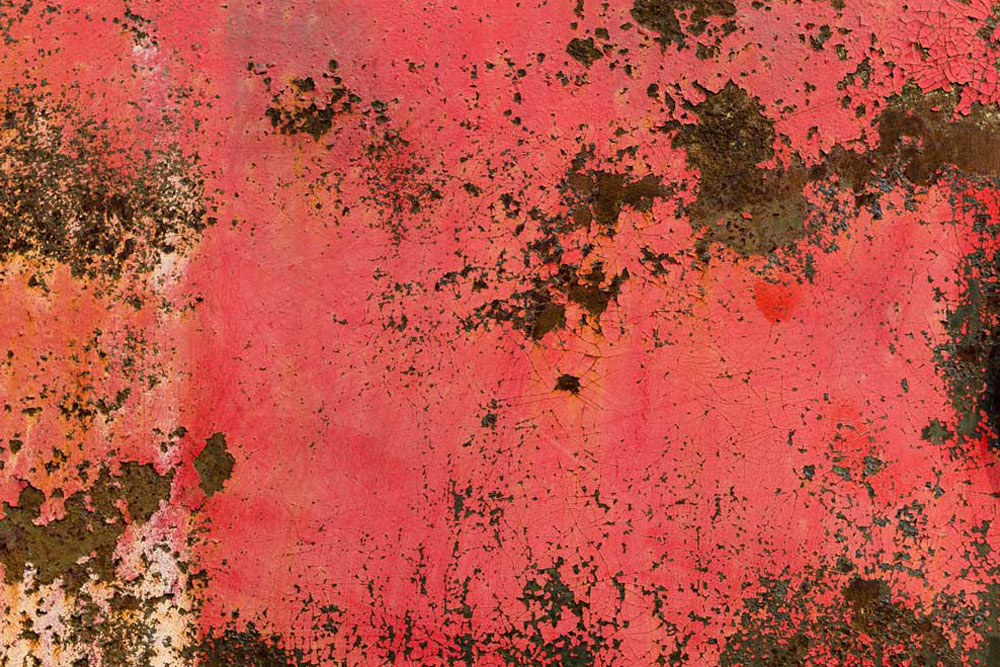Anti-Rust Paint? Rust is the most common result of corrosion in metals and refers to the corrosion of iron and its alloys, such as steel. Over time, with the presence of oxygen and water, the hard structures of iron completely disintegrate.
As the metal surface disappears and turns into rust, new metal is exposed, the cycle repeats, and the layers remain scaly. The only solution is to block these elements by covering them with polymers before they start to corrode.
Why Does Anti-Rust Protect Metal Better?
Paints and varnishes are commonly used to cover metal surfaces, but they have a very limited protective quality and deteriorate over time without regular maintenance. These thin layers weaken and can easily crack and flake.
Anti-Rust types have been developed for resistance to abrasion, impact, high temperatures, chemicals, water, and many other environments for a wide variety of applications. These materials withstand the structure even when the structure changes or vibrates and are stretched without cracking.
The impermeable nature of these materials creates a seamless and leak-proof barrier. These factors make them very affordable.
Anti-Rust is suitable for almost any type of steel and metal and has the following 5 advantages:
- Disposal of water and other liquids (in the case of barrier coatings)
- Repels fungi, algae, and moss.
- Protect the weather from acid rain, saltwater, ice, and so on.
- Chemical resistance
- Moisture, non-slip or self-cleaning properties depend on the choice of coating.
Industrial Antirust
Industrial Anti-Rust is made of the best quality alkyd resin and high-performance anti-corrosion pigments. This Anti-Rust is used for indoor and outdoor applications, on all surfaces of metal panels, wood, plaster, and small industrial applications. Easy to use, excellent adhesion, excellent coverage, good resistance to atmospheric elements.
- Remove any old, flaky paint from the surface before working with industrial Anti-Rust. Sand it if necessary.
- Dilute this Anti-Rust with a thinner and apply it to the surface. The amount of dilution depends on the ambient temperature, the substrate, and the methods of use. Under normal conditions, the dilution rate for use is 12 to 15% with a brush, 10 to 12% with rollers, and 15 to 20% with a spray.
- The recommended temperature for use and painting of this product is higher than 10 degrees Celsius, the surface temperature is higher than dew point and humidity is less than 80%.
Types of industrial Antirust
Barrier:
Non-porous Anti-Rust (anti-corrosion paint) designed to prevent corrosive agents from contacting the substrate. For example, rust powder, polyurethane, and nanocoatings.
Inhibitory coatings:
release a chemical that interferes with the electrolyte and stops the corrosion process. For example, oil Anti-Rust has corrosion inhibitory additives such as zinc, aluminum, zinc oxide, and so on.
Epoxy Anti-Rust
Epoxy Anti-Rust protects metal surfaces made of iron or steel from oxidation or corrosion. Epoxy Anti-Rust is applied for active anti-corrosion and anti-corrosion protection of iron and steel surfaces to be coated with EPOXY COAT or DUROFLOOR epoxy systems.
It is very hard and resistant to friction. This material is especially resistant to dilute acids, alkalis, petroleum products, some solvents, water, seawater, etc. If the reddish-brown or gray color is satisfactory, it can be used as a coating. Common examples of its use are in the protection of silos, steel bridges, iron roofs, pipes, fences, and so on.
Application of epoxy Anti-Rust
The substrate must be dry, stable, and free of any barriers to bonding, such as dust, loose particles, grease, rust, or any kind of corrosion. Depending on the nature of the bed, it should be prepared by sanding, rubbing, blasting sand, etc., and then thoroughly cleaning it of dust. The resin and hardener components are packaged in two separate containers, with a predetermined mixing ratio of the correct weight.
The two are mixed together. Mixing should be done using a high-speed mixer (300 rpm) for about 5 minutes. Used to fill the surface with a brush, roller, or spray gun. The second layer is applied within 24 hours after the first layer dries.
Epoxy Anti-Rust contains solvent. In case of use in closed rooms, necessary measures should be taken for proper ventilation. Epoxy stainless layers should be protected from moisture 4-6 hours after application. Moisture may make the surface white or sticky. It may also interfere with hardening.

